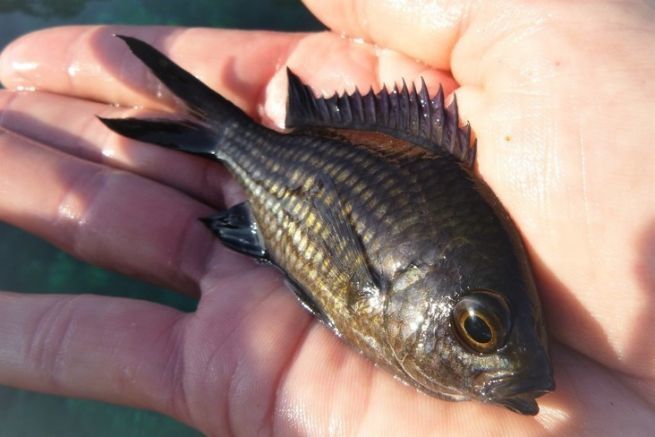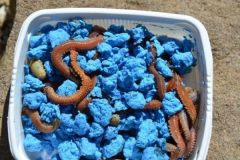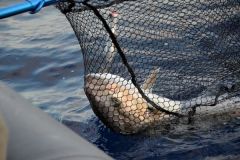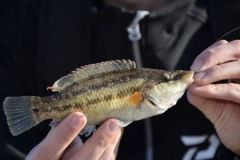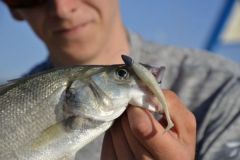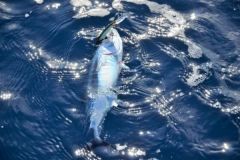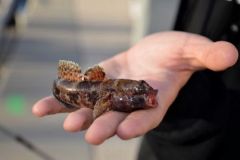Presentation of the castagnole
The scientific name of the beetle is Chromis chromis, it is also called blue damsel, small beetle or black beetle depending on the region. With its black body, its numerous scales and its atypical tail in the shape of a swallowtail, the beetle is very easily identifiable. The beetle very rarely reaches 15 centimeters.
Behavior and diet
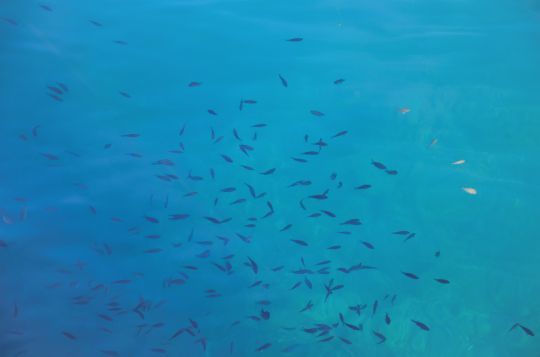
The castagnole is a small fish very present in the Mediterranean, it lives mostly in schools and is present from the first meter of water to about 50 meters deep. The castagnole come closer to the coast when the water starts to warm up, they are found on rocky areas and near posidonia beds.
The little beetle has a small protractile mouth and feeds on small prey. Zooplankton, small crustaceans and various organic debris are part of its opportunistic diet.
Fishing for castagnole
Castanets are not particularly sought after by fishermen, on the contrary. In fact, anglers who support themselves or those who practice surfcasting, try to avoid castanets that quickly clean their hooks. It is true that when fishing with rather fragile baits, it is better not to come across a school of castanets that will hinder the fishing session.
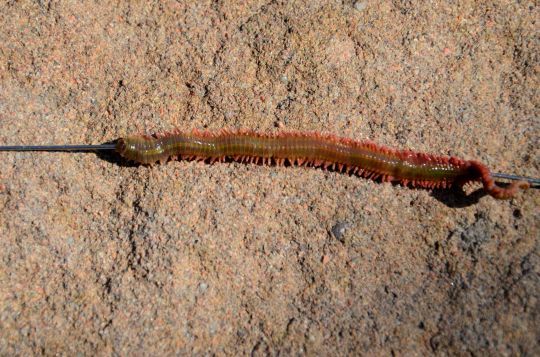
However, the small castagnole can be sought after for example to initiate a child to fishing. It is an easy to catch fish that will amuse the little ones.
To fish for castanets, you must either bait the school or move around until you find it. The bait should be fine, even liquid, made of breadcrumbs or sardine oil. The fishing will be done with the blow or with the longline, using small pieces of worms, preferably baited with a needle, on small hooks (number 14 to 20).
Castanets can also be fished with very small soft lures in rockfishing mode.
